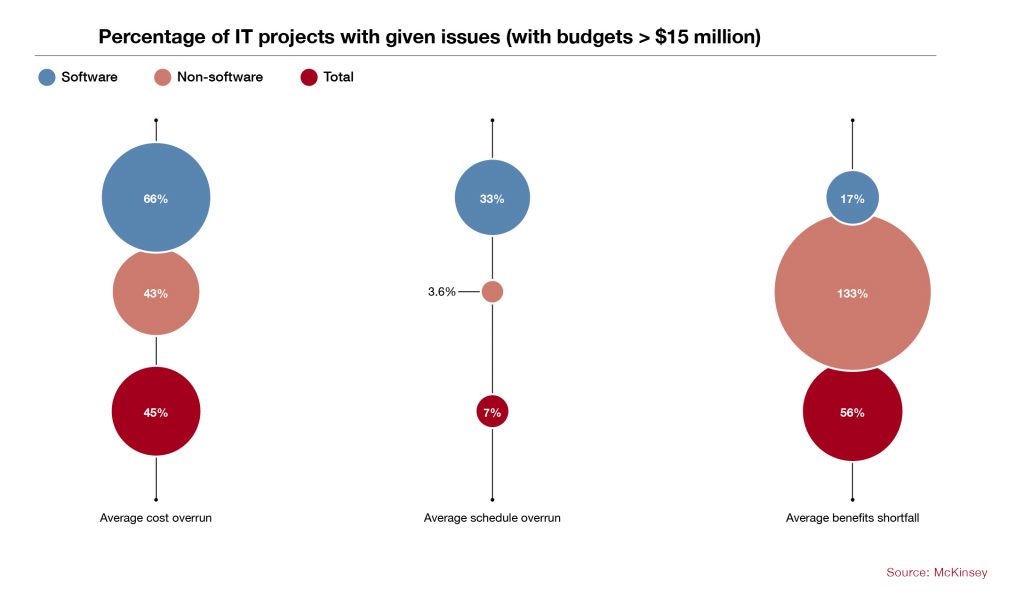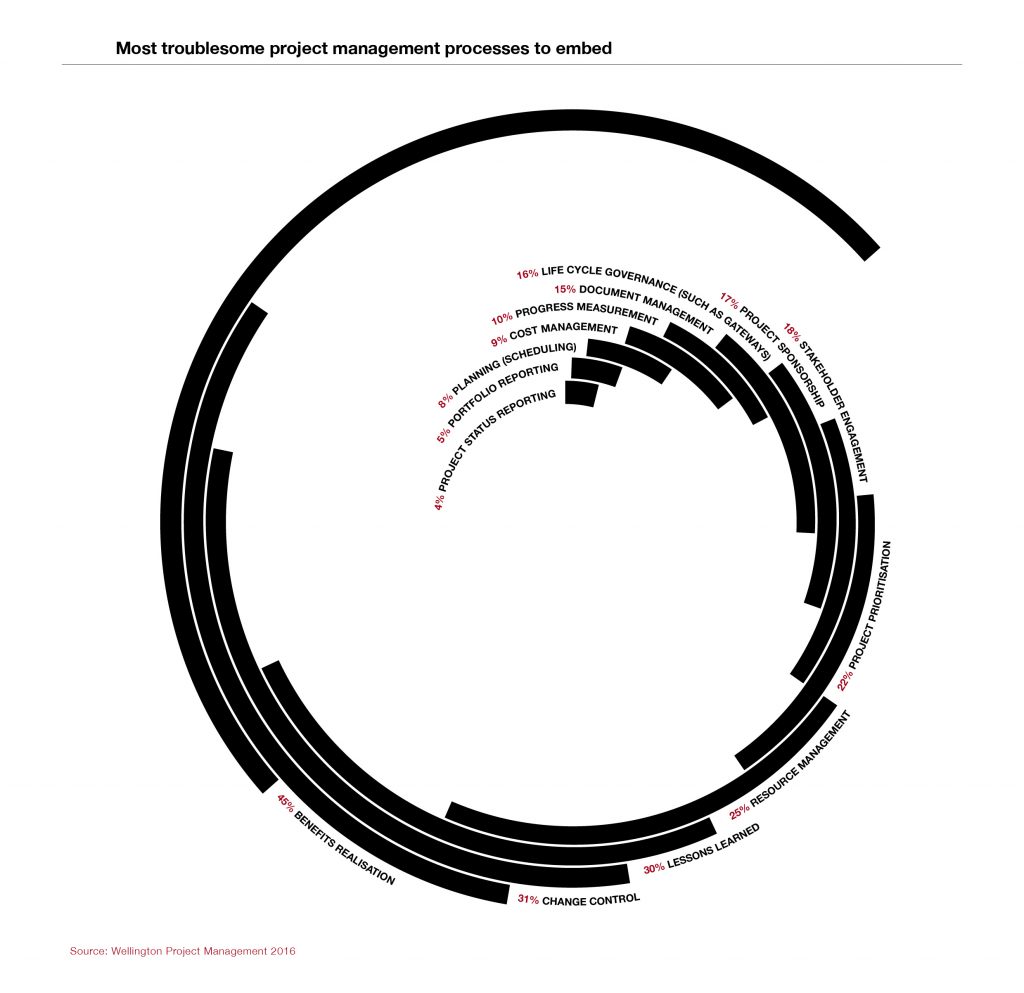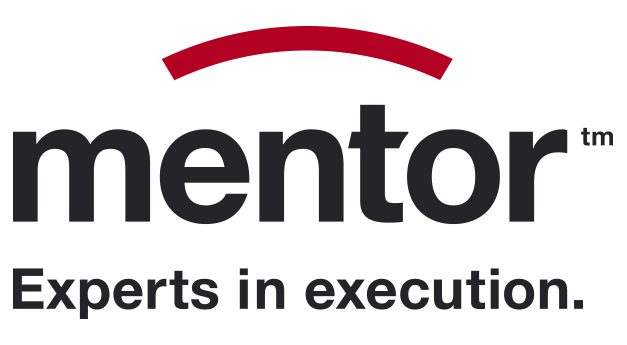Why it takes time to be an overnight success
When it comes to transformation programs, internal alignment forms the foundation for strategic success. Naturally, aligning an organisation to its strategic priorities requires serious upfront investment in terms of time. But without this time, it’s a case of ‘fail to prepare – prepare to fail’.
Implementing strategy successfully enables economies to grow, businesses to succeed, and people to progress in their careers. Yet more than 70% of significant change initiatives fail.
To avoid failure, there’s one overarching action organisations must take before starting any implementation. They must take the time to ensure they are strategically aligned. There must be a shared focus – and agreement – on the priorities. Failure can be costly.
Alignment is often challenging, particularly at scale. After all, the bigger the program, the more variables come into play. High-profile programs regularly navigate across multiple functions, borders, cultures and ways of working. A report produced by Raconteur Custom Publishing found just 0.5% of Financial Services programs stayed within their original spending plans, with telecoms coming in at 7%, while IT and government reached 20%.

To prevent your program becoming part of these statistics, here’s a guide – built on experience of successful program execution – to getting your strategy on the right track.
Executive alignment
This is the first building block. It’s critical – business-critical – to get the executive team working together towards the same strategic goals. Greater understanding, buy-in and commitment to the ‘bigger picture’ mean the greater the chance of success. If there’s little understanding among those at the top, what chance does the rest of the organisation have to execute the strategy?
Once this is achieved, there needs to be clear communication of this new agreement. Apart from the obvious benefits relating to demonstrating strong leadership, this sets expectations across the organisation. A clear system of accountability should be set out, detailing who is responsible for what. This helps build a sense of purpose, and offers reassurance to the core program team and the wider workforce.
Separate a program from ‘Business As Usual’
Gaining strategic executive alignment is the first step on the path to successful strategy execution. The next step is to organise the program for success. Business-critical programs work best with a dedicated specialist core team whose sole focus is this program and then tapping into additional resources across the organisation as required. This structure ensures clear accountability and focus.
There also must be a decision regarding where a program fits in among a company’s day-to-day operations. A business-critical program will need to be treated differently from ‘business-as-usual’ activities is it is not a ‘run of the mill’ for the organisation. That means investing time to assign the correctly skilled and experienced people to the right roles, rather than asking them to ‘fit it around’ day-to-day activities. What’s more, seconded staff must be empowered and granted the necessary authority to make decisions.
Structure
To supplement the program team, the existing organisational structure has to be reviewed. Sometimes a contributing factor to a program’s failure is down to its existing hierarchy, rather than with individuals working on the program. Indeed, a rigid ‘top-down’ culture can stifle highly capable program executioners, to the point that success becomes impossible. Not only that, particularly in larger organisations, there may be siloes that need to be tackled, to ensure information can flow freely between departments.
Eliminate any ambiguities around roles, accountability, and governance – and you dramatically increase the chances of program success.
Leaders should then be permitted to use this information as they see fit. Of course, with great power comes great responsibility – that’s fair enough – big projects call for big decisions. Program leaders must be fully empowered – so that they can be fully responsible. Eliminate any ambiguities around roles, accountability, and governance – and you dramatically increase the chances of program success.
Bridging the gap between theory and practice
Now we’re at the stage of executing the strategy and at this juncture there’s often a disconnect. Typically, this happens when a team – sometimes internal managers, sometimes external consultants – map out a program strategy. Once they create a report detailing the necessary approach, it is handed over. In effect, those responsible for creating the strategy abdicate responsibility for its subsequent success (or failure). Instead, it’s left to others within the organisation who are tasked with working out how to start execution.
This action is a common example of a weak link between planning a strategy and executing it. Countering this threat requires vision, whether from an existing employee, or from an external consultant. The type of vision that recognises an organisation’s capability, and readiness, for successful program execution. It may be that the original plan is simply too ambitious. In this case, it can be best to take some time to streamline goals, and concentrate energies on what can and should be achieved within the timescale.

Risk management
To further heighten the prospect of program success, there must be contingency arrangements, which incorporate risk mitigation. Any strategic plan should include steps to reduce the probability of risk and setting of a threshold where there is acceptable risk. The main aim of this is to prepare teams for the unexpected scenarios which will crop up during a program.
There will always be external factors that affect a program – the question is how to respond. Whenever something unexpected happens, ask the following questions:
- What has happened?
- Why has it happened?
- Is it going to continue?
- What are we going to do about it?
Measuring the results
Determining the success of a program can take months. However, managers are usually under pressure to make a positive impact immediately. Within some organisations there may be a culture of the ‘quick fix’. Sometimes these can be done with little fuss, but other times they become sticking plasters that hide bigger problems.
Therefore, there needs to be a reporting system that clearly shows hard facts and performance insight. This is to identify, track and avert any threats to the program. And to identify what’s improved – after all, measurement is also a tool for finding ways to do things better.
To download the PDF or view this published article click on InnovationManagement.se.


